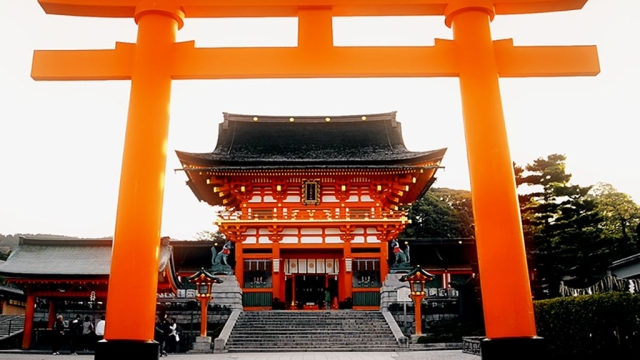Japan, a land steeped in rich history and vibrant culture, serves as the home to thousands of Shinto shrines that dot its landscape. These sacred spaces, dedicated to kami or spirits, offer a glimpse into the spiritual fabric of the nation. Each shrine tells its own story, often intertwined with the mythology and traditions that have shaped Japan for centuries. From the tranquil gardens to the majestic torii gates that mark the entrance, visiting a Shinto shrine is not merely a journey through space but a passage through time.
As you wander through these enchanting sites, you can feel the whispers of the ancients echoing in the rustling leaves and gentle flowing waters. Each Shinto shrine is a sanctuary of peace, inviting visitors to reflect, pray, and connect with nature and the divine. The rituals and festivals that take place here are vibrant celebrations of community, showcasing the enduring legacy of Shinto beliefs. Exploring these shrines reveals not just their architectural beauty but also the deep cultural significance they hold for the Japanese people.
神社
The History of Shinto Shrines
Shinto shrines in Japan have a rich history that dates back to ancient times. The roots of Shinto can be traced to the prehistoric animistic beliefs of the Japanese people, where nature was revered, and divine spirits, or kami, were believed to reside in various elements of the landscape. Over time, these beliefs began to take form in the construction of shrines, serving as places to worship and connect with the divine. The earliest shrines emerged in the early centuries of the Common Era, prominently featuring natural elements such as trees, rocks, and mountains, which were deemed sacred.
By the time of the Heian period, Shinto shrines were more formally established with distinct architectural styles. This era saw the rise of the shrine architecture we recognize today, characterized by elaborate torii gates that mark the entrance to sacred spaces. The connection between nature and spirituality became more pronounced during this period, as shrines were built in harmony with their surroundings. Emperors often played a significant role in the patronage and expansion of shrines, solidifying their importance within Japanese culture and society.
The Edo period marked a transformative time for Shinto shrines, as they became central to community life and local identity. Many shrines adapted during this era by becoming more accessible to the public, and festivals were organized to celebrate the kami, fostering a sense of communal spirit. The Meiji Restoration in the late 19th century further influenced the status of Shinto shrines, as the government promoted Shinto as a state religion. This led to the establishment of the modern Shinto shrine system, shaping the landscape of worship in Japan and ensuring that Shinto shrines remain a vital part of Japan’s cultural heritage today.
Architectural Wonders of Shinto Shrines
The architectural style of Shinto shrines in Japan is distinct and reflects a deep connection to nature. Typically constructed from wood, these structures often blend harmoniously with their surroundings, embodying the Shinto belief in the sacredness of the natural world. A prominent feature is the use of thatched roofs, which not only serves practical purposes but also symbolizes a respectful attitude toward the materials used and the environment around them. The asymmetrical designs of the shrines convey a sense of balance and simplicity that resonates with the principles of Japanese aesthetics.
One of the most iconic elements found in Shinto shrines is the torii gate. These gates serve as a symbolic threshold, marking the transition from the mundane to the sacred. The vibrant vermilion color of many torii gates is thought to ward off evil spirits, while also inviting divine presence into the shrine grounds. Visitors often feel a sense of reverence as they walk through these gates, which signify entry into a space where the divine can be encountered, creating a powerful experience that connects them to Japan’s spiritual heritage.
The inner sanctum of the shrine, known as the honden, is another architectural marvel. This area is usually not accessible to the public, as it houses the kami, the spirits or deities worshipped in Shinto. The honden’s design often features ornate carvings and meticulous attention to detail, reflecting the skill of traditional craftsmen. The unique stylistic variations across different regions in Japan contribute to the rich diversity of Shinto architecture, making each shrine a unique expression of faith and artistry.
Rituals and Practices at Shinto Shrines
At the heart of Shinto shrines in Japan lies a vibrant tapestry of rituals and practices that connect devotees to the spiritual realm. Visitors often commence their journey by purifying themselves at the temizuya, a water basin usually found at the shrine’s entrance. This act of purification involves washing hands and rinsing the mouth, symbolizing the cleansing of body and spirit before approaching the kami, or divine spirits. These rituals serve as a preparation for engaging in deeper spiritual activities and reflect the importance of purity in Shinto beliefs.
One of the most notable practices at these shrines is the offering of prayers and wishes, commonly performed through the act of omikuji and ema. Omikuji are fortune-drawing slips that indicate the future, providing insights whether good or bad. Visitors may tie their omikuji to a branch or a designated area within the shrine as a gesture of hoping for good fortune. Ema are small wooden plaques where individuals write their aspirations or thanks, hanging them at the shrine in hopes that their prayers reach the kami. These acts illustrate the deep-rooted desire for connection and communication with the divine.
Seasonal festivals, known as matsuri, further highlight the cultural significance of Shinto shrines in Japan. These celebrations often include processions, traditional music, and dances that honor the kami and the agricultural calendar. Each shrine typically has its own unique festivals, which serve to strengthen community bonds and foster a sense of belonging among participants. Through these rituals and practices, Shinto shrines in Japan not only preserve ancient traditions but also continue to be vital centers of spiritual and social life for many people today.
Notable Shinto Shrines to Visit
One of the most famous Shinto shrines in Japan is Fushimi Inari Taisha, located in Kyoto. Known for its thousands of vermilion torii gates, which wind through the sacred Mount Inari, this shrine offers visitors a breathtaking landscape that is as spiritual as it is picturesque. Each torii gate is donated by individuals or businesses, and the inscriptions reveal a deep connection to the community, making a walk through the gates a unique experience of cultural significance.
Another must-visit is Meiji Jingu, situated in the heart of Tokyo. This shrine is dedicated to Emperor Meiji and Empress Shoken, symbolizing Japan’s transition into the modern age. Surrounded by a lush forest, the tranquil atmosphere provides a stunning contrast to the bustling city nearby. Visitors can engage in traditional Shinto practices, such as making wishes and tying their fortunes onto wooden plaques, creating a rich connection with the history and spirituality of the site.
Lastly, Ise Jingu in Mie Prefecture is considered one of the most sacred Shinto shrines in Japan. It is dedicated to the sun goddess Amaterasu and plays a significant role in Shinto beliefs. What makes Ise Jingu particularly special is that it is rebuilt every twenty years, maintaining a cycle of renewal and reverence. The serene surroundings and the ancient wooden architecture invite visitors to reflect on their spiritual journey, offering an authentic glimpse into Japan’s Shinto heritage.





